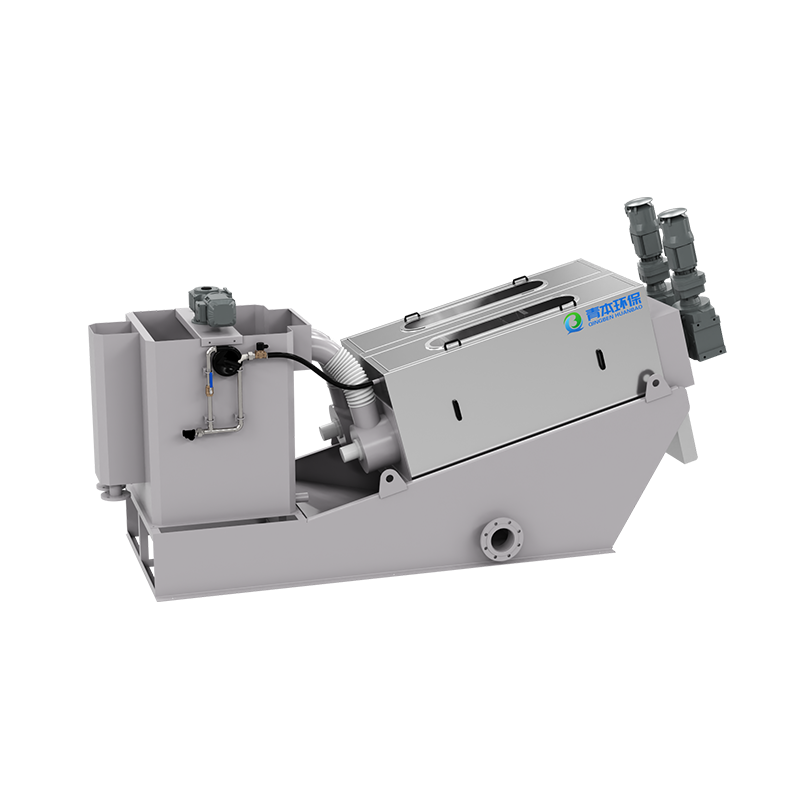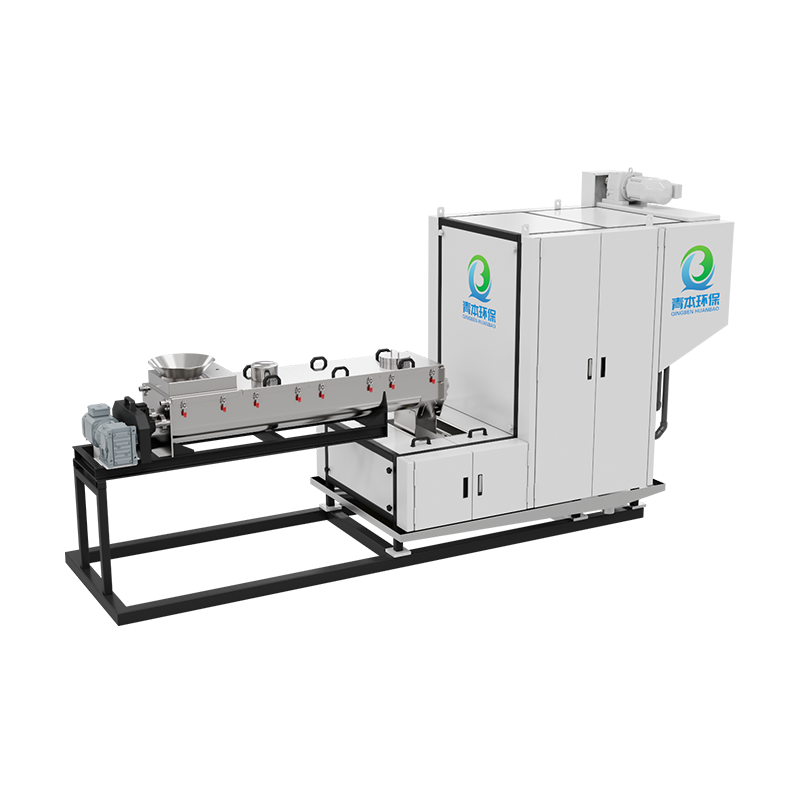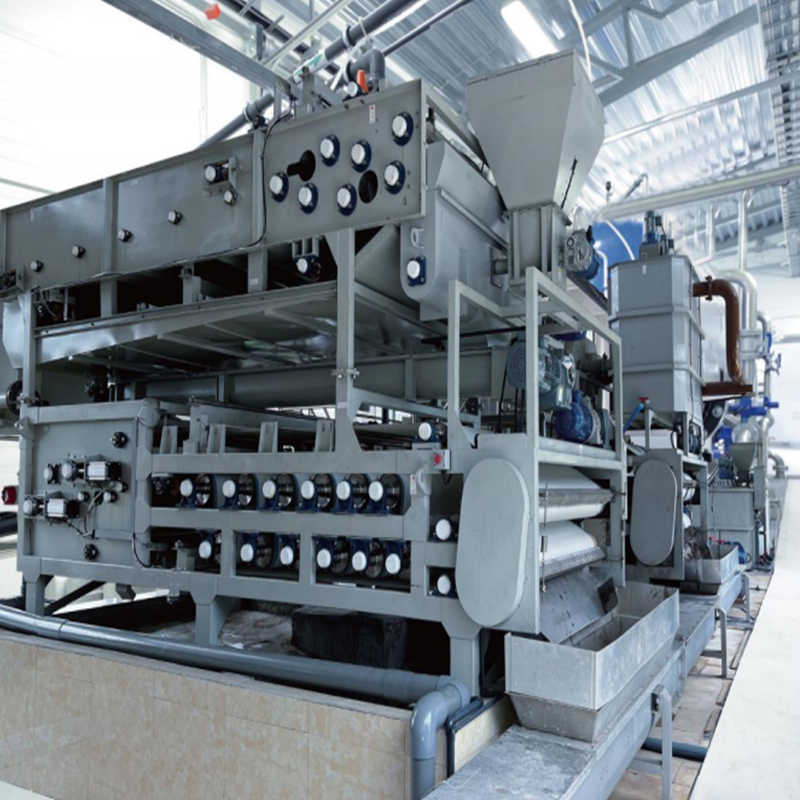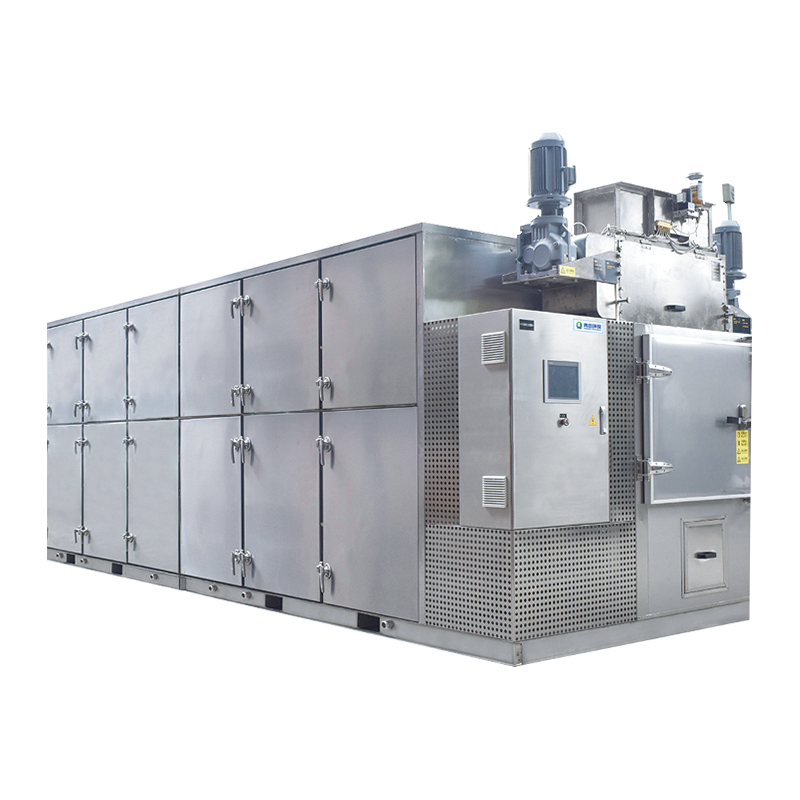1. The synergistic effect of multi-stage concentration and pressing
The reason why the screw press sludge preconcentration conch machine can achieve sludge reduction is due to its synergistic mechanism of multi-stage treatment. The equipment integrates the concentration and dehydration processes that traditionally require multiple units to complete into a single body to form a continuous treatment process. In the concentration stage, after the sludge enters the equipment, it is initially concentrated by gravity in the multi-layer structure composed of fixed rings and floating rings. This process can remove about 30-50% of the free water in the sludge. As the screw shaft rotates, the sludge is pushed to the dehydration section. At this time, the volume cavity gradually shrinks, and the applied mechanical pressure continues to increase, completing the removal of bound water and achieving deep dehydration.
The structural design of the equipment plays a decisive role in the sludge reduction effect. The spiral shaft adopts a clever design of variable pitch and variable diameter. From the feed end to the discharge end, the pitch gradually decreases and the shaft diameter gradually increases. This structural change makes the pressure on the sludge increase gradually during the movement. At the same time, the gap between the fixed ring and the floating ring gradually decreases along the sludge forward direction, from a few millimeters in the concentration section to less than one millimeter in the dehydration section, forming a progressive extrusion environment. This physical structure design avoids the "pressure mutation" phenomenon commonly seen in traditional filter press equipment, allowing water to be squeezed out smoothly and continuously, which not only protects the sludge floc structure, but also improves the dehydration efficiency.
2. Integration of material science and mechanical design
The second technical pillar for the screw press sludge pre-thickening and refining machine to achieve efficient reduction lies in its innovation in material selection and surface treatment. The main components of the equipment are made of stainless steel. These materials not only have good corrosion resistance, but also can withstand the erosion of acid and alkali substances and organic solvents in the sludge for a long time. More importantly, their surface characteristics have been specially treated to reduce sludge adhesion. This material treatment process enables the equipment to maintain stable dehydration performance during long-term operation and avoids the decline in efficiency caused by component wear.
3. Process optimization and intelligent control
Reducing sludge depends not only on the mechanical design of the equipment itself, but also on the coordination of process optimization. Before entering the press, the sludge usually needs to be chemically conditioned and an appropriate amount of flocculant is added to make the fine particles form larger alum flowers and improve its dewatering performance. Optimized agent selection and dosage can increase the subsequent mechanical dewatering efficiency by 30-50%. The mixing system integrated in the equipment ensures that the sludge and the agent react fully to form flocs with stable structure. These flocs can remain intact during the pressing process to form a porous filter cake, which is conducive to the smooth discharge of water.
The comparison with traditional dewatering technology can better highlight the reduction efficiency of the screw press. Compared with the 60-70% reduction rate of the belt filter press and the 50-65% reduction rate of the centrifugal dewatering machine, the screw pressing technology can improve the reduction effect by 20-30% on average. Importantly, its energy consumption is only 1/3 to 1/2 of that of traditional technologies, drug consumption is reduced by 15-20%, and operating and maintenance costs are reduced by more than 50%.




















